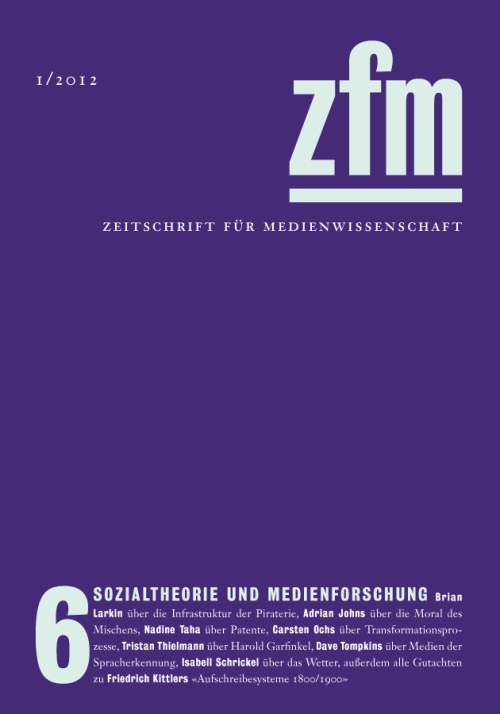Taking into account
Harold Garfinkels Beitrag für eine Theorie sozialer Medien
Abstract (Deutsch)
Dieser Aufsatz zieht paradigmatische Parallelen in der Entwicklung von Ethnomethodologie und Medienwissenschaft, indem Harold Garfinkels theoretischer und praxeologischer Beitrag für die Erforschung sozialer Medien skizziert wird. Anhand der Analyse von Garfinkels «Sociological Theory of Information» wird demonstriert, in welcher Weise die notwendigerweise beschreibbaren und berechenbaren Eigenschaften sozialer Informationsobjekte auf die zentrale Bedeutung von «accounts» verweisen, durch die sich die Handlungsmacht kommunikativer Netze begründet. Soziale Medien unterscheiden sich demnach von allen anderen dokumentenbasierten Medien in erster Linie durch ihre gesteigerte «accountability», auf deren struktureller Grundlage abschließend Soziotechniken abgeleitet werden, die kennzeichnend für das World Wide Web sind.
Abstract (English)
Taking into Account. Harold Garfinkel’s Contribution to a Theory of Social Media
This essay draws paradigmatic parallels between the development of ethnomethodology and media studies by outlining Harold Garfinkel’s theoretical and praxeological contributions to social media research. Based on the analysis of his «Sociological Theory of Information», it is demonstrated how the thingification of information within accounts determines the agency of communicative nets. Social media are therefore distinguished from other document-based media mainly through their increased accountability. Taking this into account, the essay concludes with patterned socio-techniques already described by Garfinkel in the 1950s that still remain characteristic for the Web today.
Bevorzugte Zitationsweise:
Die Veröffentlichung ist rechtlich geschützt, siehe auch § 38 UrhG.
